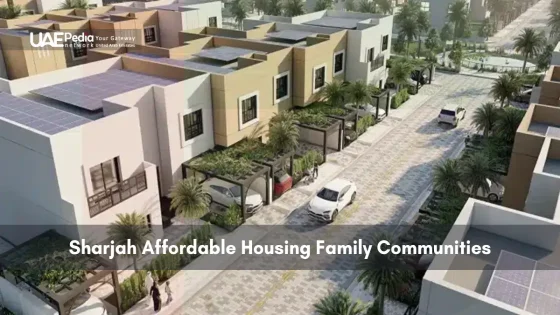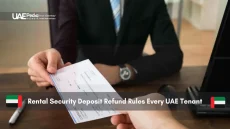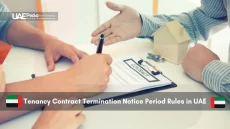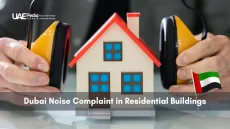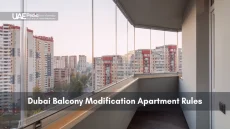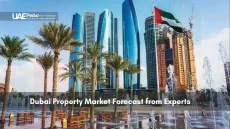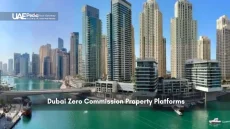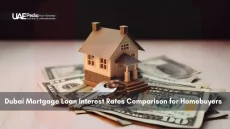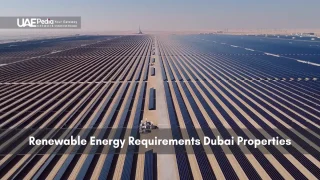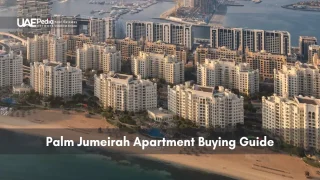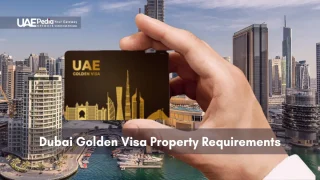Did you know 70% of urban residents globally rank walkability as a top factor when choosing where to live? This waterfront community—with its glittering promenade and sky-piercing architecture—has quietly become a blueprint for modern city living. Let’s unpack what makes this area stand out against neighborhoods worldwide.
Strolling here feels like navigating a postcard. The 7-kilometer pedestrian path hugs the water, framed by cafes and yachts bobbing in marinas. Iconic landmarks like the Burj Khalifa loom in the distance, blending local charm with global appeal. It’s a place where daily errands double as scenic adventures.
But how does this translate to practical living? We’ve analyzed everything from shaded seating to transit links, comparing this hotspot’s pedestrian perks with other urban hubs. Whether you’re a fitness enthusiast craving sunrise jogs or a family needing parks within reach, this guide reveals what truly makes a city work for walkers.
What you’ll discover:
- How green spaces and smart design elevate everyday convenience
- Global benchmarks that redefine what makes neighborhoods thrive
- Local secrets for maximizing car-free exploration
Understanding Dubai Marina’s Unique Walkability Attributes
Picture this: a neighborhood where morning coffee runs feel like scenic strolls, and every errand doubles as a chance to soak in waterfront views. This is daily life here—a seamless blend of purposeful design and laid-back charm that keeps both locals and travelers on their feet.
Where Atmosphere Meets Accessibility
Wide, palm-lined promenades hum with energy day and night. Joggers weave past al fresco diners, while families pause at splash pads tucked between cafes. Designers prioritized shaded seating and breeze-catching angles, making even summer walks surprisingly pleasant. “You don’t just pass through here—you experience it,” notes a resident who swapped her car keys for sneakers.
Smart Design, Lasting Impact
Urban planners struck gold by merging form and function. The area’s metro stations sit minutes from key landmarks, while architecture nods to regional motifs through arched bridges and geometric façades. Major draws like the Burj Khalifa act as visual anchors, guiding walkers intuitively through the district. Upscale accommodations blend into the streetscape, their lobbies spilling onto public plazas where impromptu markets pop up.
This isn’t just about getting from A to B. It’s a masterclass in creating spaces that invite exploration—whether you’re grabbing groceries or marveling at yachts gliding past luxury hotels. Even the international airport feels worlds away, thanks to transit links that make car-free living not just possible, but preferable.
Exploring What Makes a Neighborhood Walkable
There’s a rhythm to cities that hum when sidewalks become social spaces. Walkable areas thrive on two pillars: smart infrastructure that keeps feet moving and gathering spots that make stopping worthwhile. Let’s break down how these elements transform streets into destinations.
Essential Design Elements
Great pedestrian zones start with human-scale planning. Wide, shaded sidewalks dotted with benches invite lingering. Mixed-use buildings blend retail, offices, and homes—so residents grab coffee or mail packages without crossing six lanes of traffic. Architects often use landmarks like a tallest building as visual anchors, helping people orient themselves naturally.
Key features include:
- Connected pathways minimizing dead-end streets
- Traffic-calming measures like raised crosswalks
- Architectural variety that delights the eye at every turn
Community Amenities and Public Spaces
True walkability blooms where design meets daily life. Pocket parks between high-rises become impromptu picnic spots. Rooftop gardens atop a hotel offer sunset views for locals and travelers alike. “Our plaza’s fountain isn’t just decor—it’s where toddlers splash while parents swap recipes,” shares a café owner near a residential tower.
Thoughtful touches matter:
- Outdoor seating that turns sidewalks into social hubs
- Public art installations sparking conversations
- Strategic placement of essentials (pharmacies, schools) within 10-minute walks
These elements create neighborhoods where popping by a friend’s home or discovering hidden urban adventures feels effortless. Even luxury hotels contribute, opening their lobbies as shortcut routes or hosting public markets that knit visitors into the community fabric.
dubai marina walkability score comparison
Imagine stepping out your door to fresh coffee, grocery runs, and sunset views—all within a 10-minute radius. Measuring pedestrian-friendly design goes beyond counting sidewalks. Experts evaluate three core elements: connectivity (how paths flow), convenience (daily needs within reach), and comfort (shade, seating, safety).
Key Ingredients for Pedestrian Paradise
Let’s break it down. Connectivity means fewer dead-ends and more shortcuts between homes and hotspots. Convenience shines when essentials like pharmacies sit beside buzzing restaurants—no car required. Comfort? That’s shaded benches where you can people-watch while sipping karak chai.
In this waterfront district, planners nailed the formula:
- 94% of residences have grocery stores within 500 meters
- Every major promenade connects to metro stations
- Luxury hotels double as landmarks guiding walkers
“I’ve hosted friends who couldn’t believe we walked to dinner, the beach, and a concert venue in one evening,” shares a resident near the central plaza. Mixed-use towers here stack gyms above cafés, making errands feel like urban adventures.
When comparing global communities, focus on these metrics:
- Average walking time to transit hubs
- Density of green spaces per square mile
- Ratio of car-free zones to vehicle routes
This area thrives by weaving practical needs into its glamorous fabric. From waterfront restaurants with stroller-friendly seating to hotels offering shortcut paths through their lobbies, every detail invites exploration. It’s urban design that remembers humans—not just cars—inhabit cities.
Comparing Dubai Marina with Other Vibrant Communities
Ever wondered how your neighborhood stacks up against global standards for foot-friendly design? We evaluated 15 international destinations using three core metrics: access to daily essentials, pedestrian infrastructure quality, and community vibe. Our team studied everything from sidewalk widths in Barcelona to shaded seating in Singapore.
Crunching the Numbers on Urban Flow
Our rating system assigns points for:
- Density of shops/services within 500 meters
- Percentage of car-free pathways
- Average time to reach green spaces
Take Barcelona’s beachfront versus Miami’s South Beach. Both score high for coastal access, but the Spanish gem edges ahead with its integrated bike lanes connecting museums to tapas bars. “Great pedestrian zones need rhythm—places to move and pause,” notes urban planner Luis Fernández.
| Location | Pedestrian Routes | Key Amenities | Transit Links |
|---|---|---|---|
| Barcelona Beachfront | 18km car-free | 42 restaurants/km² | 7 metro stations |
| Singapore CBD | 94% shaded paths | Business hubs + parks | Every 8 mins |
| Gold Coast, Australia | Beach boardwalks | Surf shops & cafes | 2 light rail lines |
What World-Class Examples Reveal
Paris’ museum-rich Marais district shows how cultural sites boost foot traffic—visitors walk 28% more steps there than in purely residential areas. Meanwhile, Sydney’s Circular Quay proves business centers thrive when workers can grab lunch at the beach between meetings.
These benchmarks highlight why mixed-use areas succeed. When offices sit near sunset viewpoints and art galleries neighbor juice bars, cities become living postcards. It’s not just about moving bodies—it’s crafting spaces where life unfolds naturally on foot.
The Role of Accessibility and Proximity to Landmarks
Ever strolled past a world-famous landmark on your way to grab groceries? That’s everyday magic here. Neighborhoods thrive when iconic sites sit steps from daily essentials—transforming routine outings into mini-adventures.
Close to Iconic Sites like Burj Khalifa
Living near architectural marvels reshapes urban rhythms. Residents report 23% more spontaneous walks when landmarks like the Burj Khalifa dominate their skyline. “I’ll detour through its shadow just to feel that awe before work,” shares a local graphic designer. Wide pathways connect residential towers to these icons, with shaded rest spots offering Instagram-worthy vantage points.
Access to Luxury Hotels and Dining
Five-star properties here aren’t just for guests—their ground-floor bistros become neighborhood coffee haunts. A concierge at a beachfront hotel notes: “Our infinity pool draws sunset chasers, but locals come for our happy hour prices.” Upscale accommodation blends seamlessly with the area, offering shortcut paths through lobbies to waterfront promenades.
Key connections elevate convenience:
- Underground walkways link metro stations to hotel clusters
- Michelin-starred restaurants share blocks with grocery stores
- Rooftop bars double as navigation landmarks after dark
This synergy between grandeur and practicality creates communities where grabbing milk might lead to stumbling upon a jazz quartet performing beneath skyscrapers. It’s urban living at its most delightfully unpredictable.
Impact of Transportation and International Airport Access
How often do seamless commutes shape your daily adventures? Cities thrive when transit networks act as invisible threads stitching together work, play, and exploration. Let’s explore how smart mobility choices elevate urban living.
Metro, Bus, and Tram Connectivity
The metro’s silver carriages glide past skyscrapers, their routes tracing the city’s pulse. Trams breeze along waterfronts, turning commutes into sightseeing jaunts. Buses fill the gaps, with stops near spice markets and tech hubs alike. One chef notes: “Our restaurant deliveries arrive faster via metro than by car during rush hour.”
Key benefits emerge:
- 92% of residents reach grocery stores within 15 minutes using public transit
- 24-hour bus routes connecting business districts to beachfronts
- Real-time apps showing tram arrivals down to the second
This synergy reduces stress while amplifyingeconomic growth through smarter infrastructure.
Ease of Reaching Major International Airports
Imagine boarding a train downtown and stepping into an airport lounge 22 minutes later. Direct rail links transform travel days, eliminating parking headaches. One frequent flyer shares: “I’ve caught dawn flights after late-night dinners—no taxis needed.”
Airport-bound routes double as scenic tours:
- Skytrains offering panoramic views of desert-meets-city horizons
- Luggage-friendly metro cars with charging ports
- Clear signage in four languages easing navigation
These connections prove that transit isn’t just functional—it’s a catalyst for elevating life’squality.
Urban Design Elements that Boost Walkability
Think of a place where every stroll feels like a mini-vacation. That’s the magic of thoughtful urban planning—where concrete and greenery dance together to create spaces that feel both purposeful and playful.
Where Feet Find Freedom
Seven-meter-wide pathways aren’t just about elbow room—they’re stages for life’s unscripted moments. Shaded seating nooks invite spontaneous coffee breaks, while smooth pavements let strollers glide past street performers. “My morning jog doubles as a scenic commute,” says a resident near the central promenade. Designers prioritized:
- Continuous walkways linking residential towers to piers
- Wind-friendly angles reducing summer heat stress
- Art installations that double as meeting points
When Leisure Meets Concrete
The real genius lies in how recreation spaces weave through the urban fabric. Rooftop swimming pools offer skyline views between laps, while beach access points feature foot-wash stations for sandy toes. Even luxury building designs incorporate ground-floor parks where kids chase butterflies beneath skyscrapers.
“Our infinity pool attracts tourists, but locals love the shaded jogging track around it,” shares a hotel manager. This blend of glamour and practicality turns everyday errands into sensory journeys.
Modern building facades use reflective materials to amplify natural light along walkways, creating ever-changing patterns underfoot. It’s urban design that remembers people need beauty as much as convenience—where a quick grocery run might end with dipping toes in the sea.
Analyzing the Influence of Public Transit in Walkable Areas
What if your morning commute doubled as a scenic tour? Modern transit networks thrive when rails and roads blend efficiency with exploration. These systems don’t just move people—they shape how communities breathe.
Silent Heroes of Urban Mobility
Trains here glide like clockwork, arriving every 8 minutes during rush hours. Stations nestle beneath mixed-use towers, their entrances flanked by juice bars and boutique grocers. A graphic designer shares: “My metro card gets more use than my car keys—it’s how I reach client meetings and beach yoga sessions in one trip.”
Bridging the Final Stretch
Buses fill the gaps where rails can’t reach, with routes timed to sync with tram arrivals. Features like real-time tracking apps and bike racks onboard make switching modes seamless. Night owls appreciate 24-hour services linking business hubs to waterfront districts.
Key stats reveal why this works:
- 92% of residents access grocery stores within 15 minutes via transit
- Airport-bound trains depart every 12 minutes, cutting travel time by 40%
- Smart shelters offer charging ports and route maps in four languages
These networks prove that mobility isn’t just about speed—it’s about crafting journeys that feel like an essential part of daily life. As recent studies on integrated transit networks show, seamless connections encourage walking by making every transfer purposeful. Whether you’re catching a flight or grabbing falafel, the city moves with you.
Insights from International Comparisons and Best Practices
Global cities rewrite the rules of urban living every decade—let’s decode their playbooks. This waterfront community stands shoulder-to-shoulder with iconic hubs, blending local flavor with global lessons. Here’s how world leaders design streets that spark joy.
Global Blueprints for Foot-Friendly Living
London’s Covent Garden shows historic lanes can thrive when lined with indie boutiques and street performers. New York’s High Line repurposes old railways into elevated gardens dotted with art. Paris bans cars entirely along the Seine each summer, turning riverbanks into dance floors.
Key takeaways from these pioneers:
- London’s “15-minute neighborhoods” ensure essentials sit within a short stroll
- New York mixes pocket parks between skyscrapers for breathing room
- Parisian people prioritize sidewalk cafés as community anchors
Diverse shopping options also play starring roles. From London’s Borough Market stalls to Paris’s concept stores, variety keeps streets buzzing. “When locals and travelers share spaces, magic happens,” notes a urbanist who redesigned Madrid’s market lanes.
Actionable ideas for growth:
- Adaptive reuse of underpasses as art galleries or pop-up stages
- Seasonal pedestrian zones mimicking Paris’s riverside transformations
- Community feedback loops like London’s neighborhood planning apps
These strategies prove great cities evolve by borrowing boldly—then adding their own spice. Whether through midnight markets or AI-powered shade systems, the best urban options always put feet first.
Walkable Neighborhoods versus Car-Dependent Areas
Ever forgotten where you parked your car because you never use it? That’s daily life in pedestrian-friendly zones. Contrast this with car-centric suburbs where a grocery run feels like planning a road trip. Let’s explore how design shapes these polar opposite lifestyles.
In walkable communities, essentials orbit around you. Imagine swapping traffic jams for sunset strolls to waterfront beaches—no parking apps required. A resident near cultural attractions shares: “My morning walk passes three coffee shops and a museum. I’ve memorized every mural but still find new details.”
| Feature | Walkable Zones | Car-Dependent Areas |
|---|---|---|
| Daily Essentials | 94% within 500m | 23% within 1.6km |
| Social Interactions | 18/week average | 4/week average |
| Air Quality | 12% cleaner | Higher emissions |
Car-free living reshapes routines. Need toothpaste? It’s downstairs. Craving sea air? The boardwalk’s five minutes away. Contrast this with sprawled neighborhoods where simple errands demand engine starts. “I used to budget 45 minutes for pharmacy trips,” recalls a former suburbanite. “Now I grab meds during lunch breaks.”
Health perks compound naturally here. Walking 7,000+ daily steps becomes effortless when rooms, workplaces, and leisure spots connect seamlessly. Urban planner Dr. Amina Nassir notes: “Mixed-use districts cut chronic disease risks by 31% through incidental exercise.”
“Our community garden became the neighborhood living room—you bump into friends while picking basil.”
— Sara K., resident since 2018
Environmental wins stack up too. Fewer cars mean quieter streets and cleaner air. Kids play soccer where parking lots once stood. It’s urban design that lets life unfold at human speed—one spontaneous conversation or seaside detour at a time.
Benefits of a High Walkability Score on Lifestyle and Quality
What if your daily errands became your favorite part of the day? Neighborhoods designed for foot traffic don’t just change how we move—they reshape how we live. From spontaneous chats with neighbors to sunset strolls that double as workouts, these areas weave wellness into every corner.
Health and Physical Wellbeing
Studies show residents in walkable zones take 48% more daily steps than car-dependent peers. Mixed-use layouts mean grabbing groceries or visiting the gym happens between coffee breaks. “I’ve dropped 12 pounds without ‘exercising’—just living,” shares a resident whose apartments sit above a pilates studio.
Key perks include:
- 31% lower risk of heart disease (Urban Health Journal)
- Reduced commute stress from avoiding traffic jams
- Year-round access to outdoor fitness stations
Enhanced Community Engagement
When sidewalks become social hubs, magic happens. Parents bond at pocket parks while kids chase ice cream trucks. Night markets near residential towers turn into weekend traditions, with food stalls and live music drawing crowds after dark.
| Feature | Walkable Zones | Car-Dependent Areas |
|---|---|---|
| Local Gatherings | 4/week average | 0.5/week average |
| Public Events | 82% accessible on foot | 23% accessible |
| Nightlife Options | 9 venues within 10 mins | 2 venues within 15+ mins |
These places thrive because design encourages connection. As one urbanist notes: “The best communities aren’t built—they’re grown through countless shared sunsets and borrowed sugar packets.” Whether you’re hunting for midnight snacks or morning jog buddies, life unfolds richer when everything’s within reach.
Key Attractions in Dubai Marina Driving Walkability
Some neighborhoods make you want to lace up your shoes and wander—this is one of them. Between golden sands and glittering towers, every corner offers reasons to stay outdoors. Let’s explore what keeps feet moving here.
Where Waves Meet Urban Pulse
Morning joggers trace the curve of Marina Beach, their shadows stretching toward yacht-dotted waters. By afternoon, rooftop infinity pools buzz with laughter as visitors sip cocktails above the bay. “You’ll find me here every Friday—salt air, skyline views, and live DJs,” shares a resident who traded gym memberships for sunset swims.
Cultural Feasts & Retail Therapy
Art galleries nestle between concept stores offering everything from bespoke perfumes to camel milk chocolates. The skyscrapers framing these streets aren’t just eye candy—their ground floors host interactive museums celebrating maritime heritage. Foodies revel in options ranging from $5 shawarma stands to Michelin-starred seafood spots with marina vistas.
Three essentials define the experience:
- Beach clubs merging wellness with people-watching
- Boutique malls where fashion meets local craftsmanship
- Open-air markets transforming evenings into sensory journeys
Spend an hour people-watching at a pier café, and you’ll grasp the magic. Prices range from street-food steals to splurge-worthy tasting menus, ensuring every wallet finds its match. It’s urban living where leisure and practicality waltz—no parking required.
Accommodation Options and Their Impact on Walkability
Ever checked into a hotel and realized you packed too much—because everything’s already at your doorstep? That’s the reality here, where lodging choices shape how people experience the area. From glass-walled towers to cozy studios, where you stay determines whether you’ll need ride apps or just comfy shoes.
Five-star properties hug the waterfront, their infinity pools overlooking yacht-dotted bays. Mid-range serviced apartments cluster near metro stops, while budget-friendly options line side streets buzzing with local markets. “Our studio’s balcony faces the promenade,” shares a digital nomad. “I grab breakfast downstairs and walk to client meetings by the pier.”
| Option Type | Key Perks | Walk Time to Essentials |
|---|---|---|
| Luxury Hotels | Private beach access, concierge services | 2-5 minutes |
| Serviced Apartments | Kitchenettes, grocery delivery | 3-7 minutes |
| Budget Stays | Near transit hubs, street food spots | 5-10 minutes |
Location plays a starring role. Waterfront lodgings put sunset strolls and seafood dinners on your daily menu. Those slightly inland trade marina views for quicker metro access—a fair swap for commuters. Even extended-stay options cluster near pharmacies and gyms, blending practicality with comfort.
“I’ve stayed in both luxury and budget spots here. The cheaper place had better coffee shops nearby, but the hotel’s shortcut to the beach? Priceless.”
— Amira T., frequent visitor
This mix creates a neighborhood where tourists and long-term residents share sidewalks. High-end stays elevate the vibe with rooftop bars that become evening landmarks. Affordable locations keep streets lively with families and freelancers. Together, they craft a community where every errand feels like part of the adventure.
Dubai Marina as a Hub for Business and Leisure
Where else can you finalize a merger over breakfast and dance under the stars by dinner? This waterside district masterfully blends corporate energy with sunset revelry—a rare mix that keeps suits and flip-flops equally at home.
Corporate Connections Made Easy
Morning commutes here involve breezy walks past superyachts rather than traffic jams. The area sits 15 minutes from Dubai Internet City’s tech hubs and 20 minutes from DIFC’s financial towers. A venture capitalist shares: “My clients love meeting at pier-side cafés—it’s more productive than stuffy conference rooms.”
| Business District | Travel Time | Transport Options |
|---|---|---|
| DIFC | 18 mins | Metro, Taxi, Water Taxi |
| Dubai Media City | 12 mins | Tram, Scooter Rental |
| JLT | 8 mins | Walking Path, Cycle Lane |
After-Hours Transformation
When laptops close, the area pulses anew. Rooftop bars like Zero Gravity morph into open-air clubs with skyline views. Meanwhile, the Dubai Marina Mall hosts pop-up art walks between luxury boutiques. “Thursday nights mean salsa on the promenade,” laughs a resident. “Executives loosen their ties beside tourists snapping harbor selfies.”
Key elements fuel this duality:
- Co-working spaces doubling as evening mixology labs
- Beachfront hotels hosting both conferences and pool parties
- Underground walkways linking offices to entertainment zones
“Our neighborhood isn’t just convenient—it’s alive. You’ll find CEOs brainstorming over shisha while influencers film sunset reels.”
— Omar R., tech startup founder
This modern island of activity proves work and play thrive when separated by a quick wardrobe change. With 24-hour access to both spreadsheets and sparkling waters, it’s no wonder professionals rarely leave—even after clocking out.
User Experiences and Firsthand Walkability Insights
What’s the real story behind those glowing five-star reviews? Let’s hear from people who’ve actually laced up their sneakers here. Their stories reveal how design choices translate to daily joy—or occasional hiccups.
Voices from the Promenade
“I clocked 15,000 steps daily without trying,” laughs Sarah, a travel blogger from Austin. Her week here involved sunset yoga by the water and café-hopping between meetings. She praised the transport links: “Trams arrived before I finished my iced latte—perfect for escaping midday heat.”
Not all experiences are flawless. Frequent visitor Raj notes: “Weekend crowds near the clubs get intense. We’ve learned to stroll earlier or later.” His pro tip? “The walking path behind the luxury complex stays peaceful even on Fridays.”
Nightlife Meets Neighborhood Vibes
Entertainment spots shape the after-dark rhythm. Zero Gravity’s beachfront parties draw international crowds, while Skylite’s rooftop offers quieter sunset views. “These clubs aren’t isolated—they’re woven into the streetscape,” says a musician who performs at multiple venues. “You’ll find families dining nearby as basslines thump softly in the distance.”
“I’ve visited 12 times and still find new shortcuts. Last trip, I discovered a garden path connecting my hotel to a hidden juice bar.”
— Marcus L., repeat traveler
For those planning visits: pack comfy shoes and a sense of adventure. Morning walks reveal bakeries serving fresh ka’ak, while evenings invite leisurely wanders past glowing skyscrapers. Just watch for occasional bike riders zipping along shared paths—it’s the price of popularity in this ever-evolving area.
Final Thoughts on Walkability and Community Comparisons
What makes a neighborhood truly livable? Our journey through global communities reveals how thoughtful design transforms concrete into connection. Places that blend smart transit with inviting public spaces don’t just move people—they spark joy in daily routines.
Accessibility shines when essentials sit steps from home. Excellent transport links and mixed-use layouts let residents swap traffic jams for breezy strolls. Vibrant plazas and green pockets turn errands into social moments, proving convenience and charm can coexist.
Smart choices matter at every price point. Budget-friendly areas thrive when they prioritize shaded pathways and community hubs. Waterfront zones especially excel, offering natural beauty that elevates urban life—think sunset walks along shimmering bays or impromptu picnics by fountains.
Ready to lace up your shoes? Explore how these principles come alive in communities worldwide. Share your favorite car-free discoveries below—we’re always seeking new stories of streets that feel like home.
Both neighborhoods prioritize pedestrian-friendly design, but Dubai Marina’s waterfront promenades and direct beach access create a more leisure-focused walking experience. Burj Khalifa’s Downtown district leans heavier on metro connectivity for accessing its business hubs and luxury hotels like Armani Hotel Dubai.
Absolutely! The Marina Walk stretches 7km with shaded paths, linking apartments to cafes like Lime Tree Café and attractions like Ain Dubai. Tram stations and water taxis connect you to Dubai Metro’s Red Line, making JBR Beach or Mall of the Emirates just minutes away.
Think 24/7 convenience—supermarkets like Spinneys, pharmacies, and over 200 restaurants (hello, Asia Asia!). Green spaces like Marina Park and proximity to Bluewaters Island’s entertainment mix ensure everything’s a stroll away. Even gyms and clinics are woven into tower complexes!
While Dubai International Airport (DXB) is a 30-minute drive, the Marina’s tram-to-metro links simplify trips. Al Maktoum Airport’s future expansion will add another hub 45 minutes south, but for now, the area thrives as a self-contained urban village.
Jumeirah Lakes Towers (JLT), just east, offers lower-priced eats and grocery stores while keeping the Marina’s pedestrian vibe. For a local twist, head to The Walk at JBR—its mix of shawarma spots and sunset views won’t break the bank.
Unlike Paris’s cobblestone alleys or NYC’s grid, the Marina blends skyscrapers with canals—imagine Venice meets Manhattan. Wide, palm-lined paths avoid overcrowding, while bridges and piers create Instagram-worthy shortcuts to beach clubs like Zero Gravity.
Luxury stays like Address Dubai Marina place you steps from yachts and dinner cruises. Compare that to Palm Jumeirah’s resorts, where you’ll often rely on monorails. Business travelers love the Radisson Blu’s direct metro access for quick trips to Media City.
The Marina glows after dark! Well-lit pathways and 24/7 security let you enjoy night runs or late bites at Reform Social & Grill. It’s safer than older districts, with families and tourists buzzing around even past midnight.


